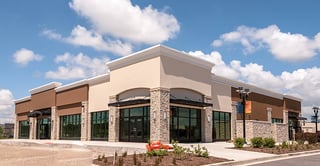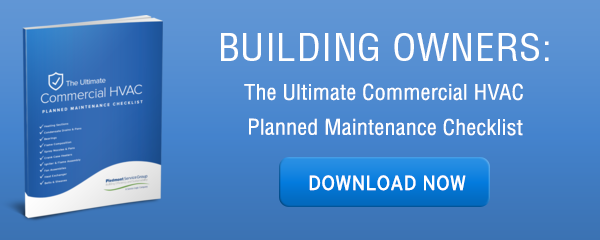The 3 Most Important Energy Efficiency Upgrades for Your Commercial Building
 As a commercial building owner or facility manager, you’re doubtlessly concerned about ever-rising energy costs. On one level, you’d love to implement everything you can to improve your building’s energy efficiency and lower those costs immediately, but on another level, you’re extremely busy and that kind of ‘to do’ list is going to be incredibly overwhelming.
As a commercial building owner or facility manager, you’re doubtlessly concerned about ever-rising energy costs. On one level, you’d love to implement everything you can to improve your building’s energy efficiency and lower those costs immediately, but on another level, you’re extremely busy and that kind of ‘to do’ list is going to be incredibly overwhelming.
We understand, and we want to help.
So consider this your Top 3 Tasks for improving energy efficiency in your commercial building. (And if you want a list that’s more specifically tailored to exactly what your facility needs, invite us out for an operational assessment and energy audit, and we’ll provide fully customized recommendations.)
Lighting
Artificial lighting is the single greatest energy consumer in most commercial facilities. There are many ways to attack optimizing your facility’s lighting for maximum efficiency. How you go about doing so will depend a lot on what lighting equipment you currently have installed, how the building is used and configured, and what your budgetary restrictions are.
Here are some specific tasks that will have a marked impact on your energy usage:
- Behavioral modification - This is as simple as training people to turn off lights as they leave an otherwise unoccupied room. In practice, it can be challenging, especially to enforce consistently. But successfully accomplishing this simple task will cut down your building’s energy usage dramatically. And, it’s free!
- Install motion sensors - As an automated method of accomplishing the same purpose, installing motion sensors in every room where artificial light is available can guarantee that unoccupied rooms are no longer unnecessarily lit. There is a relatively low initial investment, with notable savings in short time.
- Make optimal use of natural light - If your building’s windows and/or skylights provide sufficient natural light, eliminate artificial light during those hours – even a few hours a day. This is another free and simple option.
- Replace incandescent bulbs with energy efficient LEDs or CFLs - With immediate savings ranging from 25% to 80% in energy cost, this may be the single most valuable step you can take. Realistically, the initial investment could be substantial for a large facility, but again, the savings in energy costs will more than make up for it in short order.
- Replace aging, inefficient lighting systems and wiring - Potentially the costliest option for improving the energy efficiency of your facility’s lighting system is full or partial replacement of the existing wiring and lighting equipment with newer, higher-efficiency equipment. Generally, this drastic of an upgrade will only be cost-effective in older buildings that have not been retrofitted in decades. However, in certain circumstances it can be the most effective choice.
HVAC
After lighting, your commercial building’s HVAC system is likely the next highest consumer of the energy you’re paying for.
As noted above for lighting, the appropriate upgrades or adjustments suggested below will depend to a large degree on your building’s arrangement, what sort of equipment you’re currently running, and a number of other factors. These recommendations cover the bulk of what you should be doing to make your HVAC system more energy efficient:
- Thermostat adjustment - In many cases, commercial facilities are cooled or heated to temperatures that are higher or lower than necessary for simple comfort. Even a very small adjustment of the thermostat can save a great deal of energy. For instance, if you’re cooling an office to 67 degrees Fahrenheit in the hottest part of the summer and raise the thermostat to 69 degrees instead, the occupant may not even notice the change. But the energy usage for that one office will drop up to 10%! (The same applies to heating in the winter.)
- Upgrade to smart equipment - Smart equipment in this context involves digital, wi-fi connected sensors, thermostats, and related software providing automated adjustments based on usage, time of year, and a host of other factors. These systems can help extend the value of a thermostat to its highest potential by continually optimizing the temperature, humidity, and ventilation for maximum comfort AND efficiency.
- Maintain all HVAC equipment appropriately - The HVAC system includes a large number of interconnected parts, which means there are plenty of opportunities for something to go wrong. The system should be visually inspected routinely by professionals who know what to look for, and there are a number of routine maintenance activities - such as changing out filters and cleaning motor housings - that should not be neglected. A professional planned maintenance program is usually the best option to keep the system running as efficiently as possible.
- Upgrade old equipment with more efficient models - Again, this is the most expensive option, but the projected ROI is still convincing for facilities that are running very old, outdated equipment that was installed before energy efficiency was a concern. In some cases, replacing the HVAC system - or at least some of its major components - can result in an immediate reduction of 50% or more in monthly energy costs.
Building automation and analytics
Although closely related to some of the tips above, building automation and analytics provides incredible potential for ROI across numerous building systems.
Building automation systems incorporate the hardware and software that turns a standard commercial building into a Smart building, including sensors, switches, and a programmable interface. In addition, some of the newest options incorporate machine learning to allow the automation system to improve over time as it identifies and tests various energy efficiency models under varying conditions.
Many building automation systems come equipped with a robust analytics engine that can provide valuable data for you as the building owner, as well as any technicians or engineers who work on the system. In fact, the combination of cloud-based building automation with analytics allows HVAC service companies to offer remote monitoring so that your entire building’s system activity can be placed completely on autopilot for maximum efficiency and minimum headache!
So there you have the top three energy-saving areas you can explore to start lowering your energy bill today. If you need any help with specifics, please don’t hesitate to contact Piedmont Services Group today. Or, download our ebook to learn more about building analytics in action.

